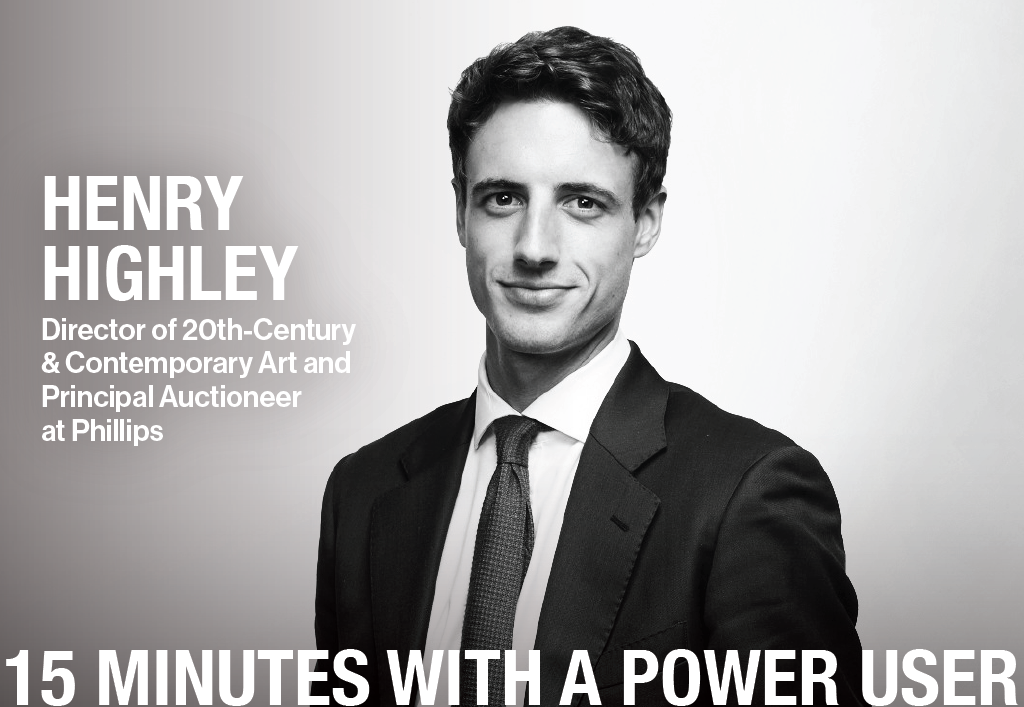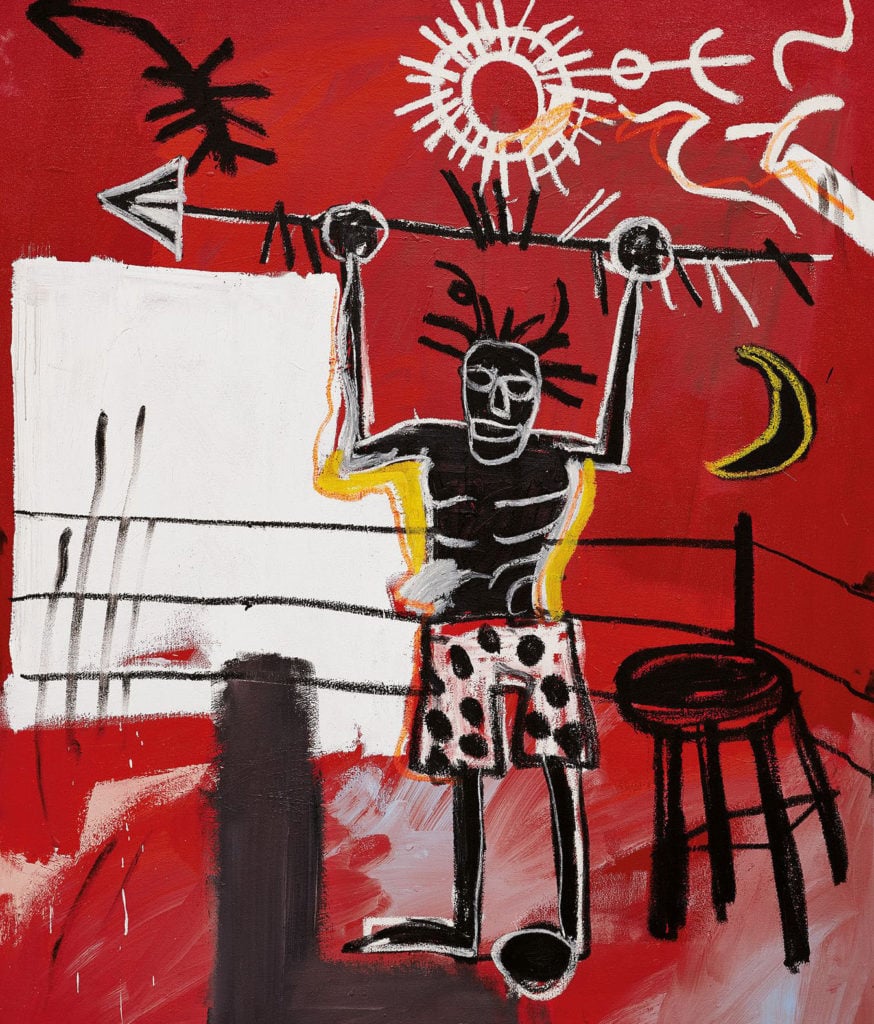15 Minutes with a Price Database Power User: Henry Highley


Artnet Price Database Team

Art world insiders trust one tool to buy, sell, and research art: the Artnet Price Database. These users cross industries—from auction houses and galleries, to museums and government institutions—and represent the art world’s most important players. We’re taking 15 minutes to chat with some of the Artnet Price Database’s power users to get their take on the current state of the market and how they’re keeping up with the latest trends.
Henry Highley is one of the youngest stars in the auction industry today, working as a senior specialist and director of 20th Century & Contemporary Art at Phillips. He started his career at the auction house in 2008 after graduating with a degree in art history from Newcastle University, and has been with the company ever since. Nowadays, Henry can be found touring the London and New York showrooms with clients, and presiding, with his characteristic charm, over Phillips’s increasingly impressive contemporary evening sales.
In advance of Phillips’s 20th Century & Contemporary Art Evening sale on November 14, we caught up with Henry during one of his touchdowns in New York and chatted about what it’s like to work as an auctioneer, the artist he’s currently most excited about, and his thoughts on social media.
What’s something that might surprise the general public about auctioneering?
The extent of the support system around you and how much of a huge role that plays during your performance in an auction continues to impact me. You execute the final bid, but your performance is totally reliant on the support of your colleagues. A successful sale is many months of work and preparation from everybody and I’m just lucky to be part of that.
What trend are you currently most excited about in the art world today? Who is one artist that you think everyone should have their eye on?
It has been a joy to witness Simone Leigh’s increasing momentum in the market. Her sculptures are extremely beautiful and poetic—I’ve been interested in her work for some time now and was very excited to see Shower Cap, 2013, make an auction record this October in London. I can’t wait to see her sculpture Brick House on the New York High Line, and observe what her practice brings next.
In the first half of 2019, total auction sales for works by KAWS totaled $71 million, compared to $66 million earned by works by Jean-Michel Basquiat. That’s little mind-blowing. Do you think KAWS is just a passing trend or is he here to stay?
Every generation has had artists considered to be the most relevant of their time, and KAWS definitely feels like such an artist today. Many collectors resonate with his works because they are vibrant and inherently communicative; they capture something universal and deeply contemporary through the use of mass-distributed imagery and a distinct aesthetic. His works are held in very well-established collections as well as collections that are just starting out—and I think this reflects their unilateral appeal.

Jean-Michel Basquiat, The Ring (1981). Available at Phillips’s 20th-Century & Contemporary Art Evening sale.
How do you think social media is influencing the way art is sold?
More and more so! Social media is like an immersive and participative shop window from which people can communicate, and digital interactions now increasingly transform into sales. With the advent of the digital age, building a collection has never been a more accessible aspiration, and our focus on contemporary art has allowed us to engage with a number of younger collectors who form a vital part of our long-term strategy. You can now share works with friends, comment on and “like” art-related posts…This has enabled a more open and fluid conversation.
What is the last thing you searched for on the Price Database?
This morning I searched for Vija Celmins in anticipation of The Met Breuer Celmins show currently in New York. I always like to check what the market deems to be an artist’s most desirable body of work before and after a major exhibition. It makes you question why certain works are seemingly more desirable than others.
The Price Database is the art market research tool trusted by appraisers and aspiring collectors alike. To learn more and to choose from our range of subscription options, click here.